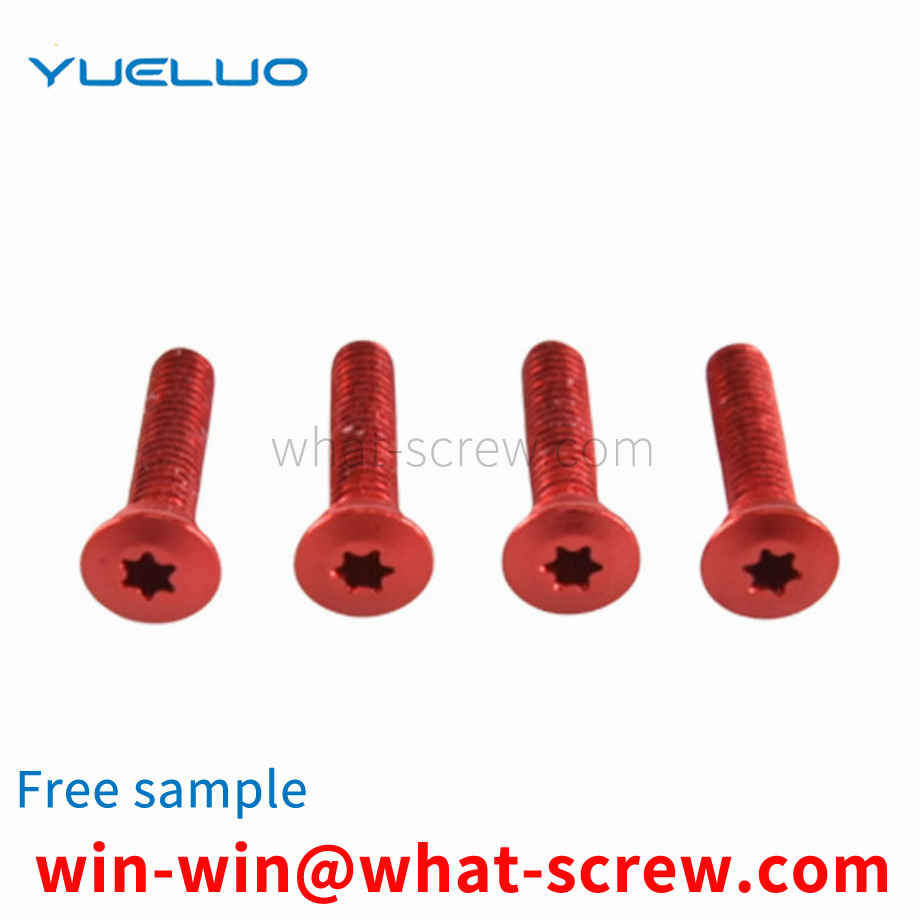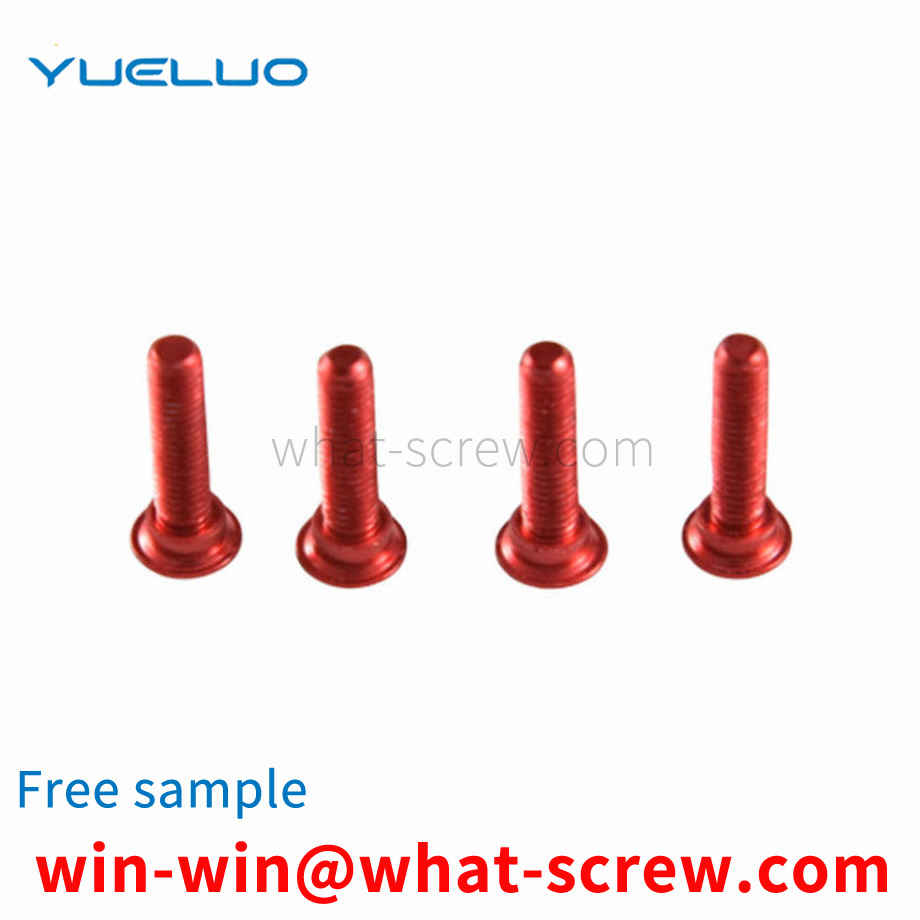Ordinary open rivet is a kind of product in rivet. It is riveted to the workpiece by expanding the rivet body after the big end of the mandrel is pulled. After the traditional rivet is riveted, the operator will cut the mandrel short, the mandrel does not work, and the workpiece is riveted by the material strength of the rivet body itself. After the mandrel is pulled, the middle of the rivet body becomes a cavity, and the mandrel shears The distance of the segments is relatively random. The random shearing determines the length of the cavity of the riveting body, and the length of the cavity determines the tensile and shear strength of the riveting body. The volume of the cavity is large, the tensile and shear strength is low, and the cavity is small. , the tensile and shear strength is slightly improved, so the breaking point of the rivet can completely affect the use effect of the rivet.
(1) The screw-in performance test is to screw the self-tapping locking screw sample into the test plate until one complete thread completely passes the test without breaking. (2) The destructive torque test is to clamp the stem of the self-tapping locking screw specimen in a thread mold or other device that matches the screw thread, and uses a calibrated torque-measuring device to measure the screw. Torque is applied until fracture, which should not occur in the clamped threaded portion. (3) Carry out a tensile test on the screw sample to check the minimum tensile load for failure. The fracture should be within the length of the rod or the unthreaded thread, and should not occur at the junction of the nail head and the rod. Before the sample breaks, it should be It can reach the minimum tensile load specified by the corresponding performance class. (4) Hydrogen embrittlement is a problem that must be strictly paid attention to in the surface treatment process of self-tapping locking screws. In the pickling process, the screw is stirred in dilute hydrochloric acid, and the amount of hydrogen absorbed by the pickling steel increases linearly with the square root of time and reaches the saturation value. Less than 100%, a large number of hydrogen atoms will be produced, which will be attached to the surface of the screw, resulting in hydrogen infiltration, and the steel will become brittle due to the absorption of hydrogen. The self-tapping locking screw takes 6~8h to drive hydrogen, and the temperature is 160~200℃ (phosphating) and 200~240℃ (electroplating). However, in the production process, the hydrogen drive time should be determined according to many production conditions such as core hardness, surface roughness, electroplating time, coating thickness, pickling time, and acid concentration. It is best to do it before passivation and just after electroplating.
Screw, some people call it screw (screw), screw (screw rod). In fact, the screw is a general term, and the screw and the screw rod are different from each other. Screws are generally called wood screws; they are the ones with a pointed end at the front and a larger pitch. They are generally used to fasten wooden and plastic parts. The screw rod is a machine screw (machine screw), which is the kind of flat head at the front end. The pitch is small and uniform. It is generally used to fasten metal and machine parts.
In general, the size, mechanical properties and working performance requirements of self-tapping screws have the following standards: 1. Self-tapping screw size standard ASME B18.6.3 2010 standard not only introduces the dimensions of slotted and cross-recessed self-tapping screws and metal drive screws, but also includes the mechanical properties and work performance requirements of carbon steel self-tapping screws. The appendix gives instructions for measuring the various dimensions and application guidance on clamping lengths and test apertures. 2. Self-tapping screw performance standards (including mechanical properties and work performance): (1) SAE J933: Introduces the mechanical performance and work performance requirements of carbon steel ordinary self-tapping screws and white-cut self-tapping screws. The requirements for selection of raw materials, heat treatment, depth of carburized layer, surface hardness, and core hardness are further specified. (2) SAE J81: The mechanical properties and working performance of self-extrusion self-tapping screws (self-tapping locking screws) are introduced. (3) SAE J78: The mechanical properties and working properties of self-drilling and self-tapping screws are introduced. (4) IFl-113: The mechanical properties and working properties of self-drilling and self-tapping screws are introduced. (5) ASTM C1513: Introduces the mechanical properties and performance requirements of carbon steel self-tapping screws. For other special types of self-tapping screws, there is no corresponding national or industrial standard, and no data for self-tapping screws made of other metal materials other than carbon steel have been recognized. For technical data on these self-tapping screws, you can check with the manufacturer.
Align the four positioning holes 12-5 of the spring washer positioning plate 2 with the four positioning columns 4 of the screw tray 1, and place them on the screw tray 1. Several screws 5 are passed through the lower positioning plate 12-2 in turn. The spring washer hole 2-7, the opening slot 12-32 of the baffle plate 12-3, the inner ring of the spring washer 7 in the spring washer hole 2-7 of the upper positioning plate 12-1, hold the spring washer positioning plate 2 by hand The raised handle 12-31 of the baffle plate 12-3 pulls the baffle plate 12-3 out of the upper positioning plate 12-1 and the lower positioning plate 12-2, and several spring washers 7 pass through the holes on the lower positioning plate 12-2. The spring washer holes 2-7 fall down along the screw rod of screw 5, so that the screw rod of screw 5 penetrates into the spring washer 7, as shown in Figure 10, and then the spring washer positioning plate 2 is removed to complete the process of threading the spring washer.
We have many years of experience in the production and sales of screws, nuts, flat washers, etc. The main products are: blind rivets, T-shaped flat head pins with holes, sets of large cup head screws, extended screw screws and other products, we can provide you with suitable products for you fastener solutions.



















 Service Hotline
Service Hotline




